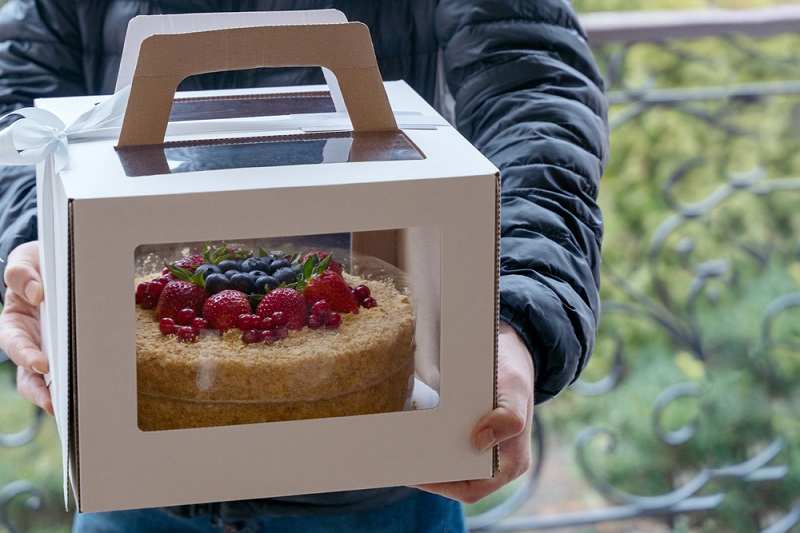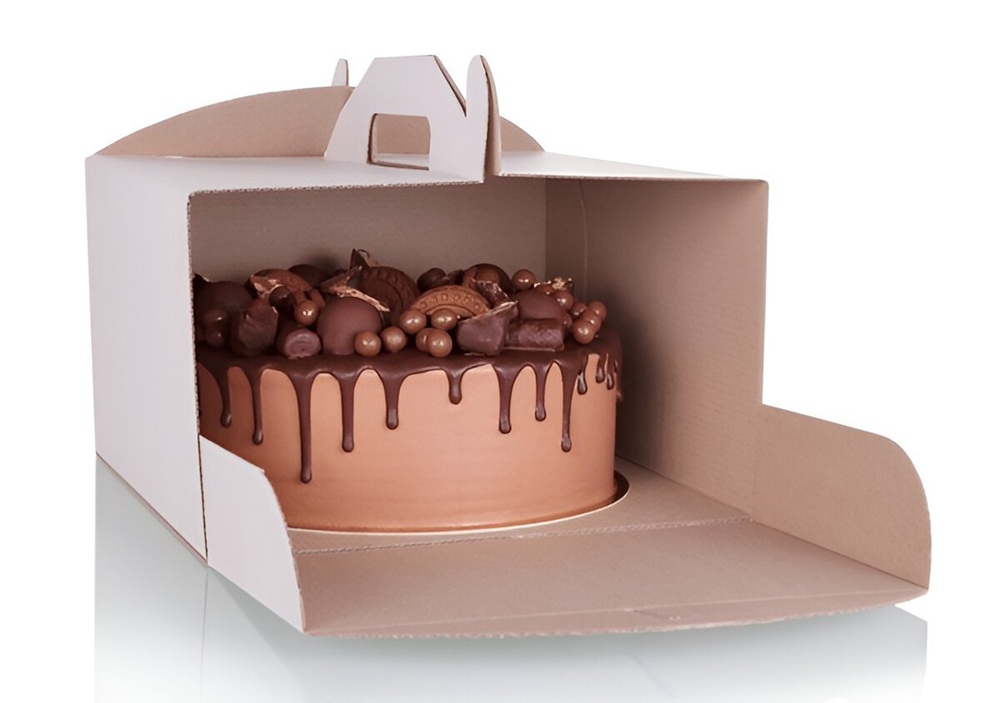
Have you ever spent hours decorating a beautiful cake, only to worry about how best to package it for safe transport? Are you feeling a bit unsure about which cake box size in cm will protect your masterpiece without squashing the icing or fondant details? If these questions sound familiar, you’re in the right place. In this post, we’ll explore everything you need to know about “cake box sizes” so that your sweet creation stays safe, fresh, and presentable.
Over the next few sections, we’ll take a close look at different types of cake boxes, from the standard cardboard variety to eco-friendly alternatives. Along the way, we’ll chat about how to measure your box carefully, what happens when your cake is unusually tall or heavy, and how to make sure your packaging stands out. If you’ve ever wondered which cake box size in cm is perfect for a 20 cm cake, or how long your cake can stay fresh in the box, we’ve got you covered.
By the end of this guide, you’ll know how to pick the absolute best cake box for any occasion. We’ll also point out a few mistakes to avoid, like overlooking cake height or forgetting about temperature and humidity. Whether you’re a home baker whipping up weekend treats or a professional looking to brighten up a special event, these tips will help you deliver a cake that looks just as fantastic as when you first took it out of the oven.
Why Choosing The Right Cake Box Matters
If you’ve ever carried a freshly iced cake in your car with bated breath, you already know why choosing the right box matters. The box doesn’t just store your cake; it protects and preserves those carefully piped details. A good cake box shields your creation from dust, bumps, and smudges, especially if you’ll be driving over a few potholes or speed bumps.
Beyond physical protection, the right cake box can also help maintain the freshness of your cake. By limiting airflow and sealing out excess moisture, you keep your sponge fluffier for longer. In Australia, for instance, the climate can vary a lot between humid coastal areas and drier inland regions. Picking a box that suits your cake’s environment can make a real difference, especially if you’re dealing with buttercream or fondant that’s sensitive to temperature changes.
Finally, a box is part of the overall presentation. Imagine arriving at a gathering and unveiling your dessert from a neat, well-fitting package. It looks professional. Plus, if you’re baking for clients, delivering a cake in a sturdy, attractive box enhances your brand perception. First impressions count, which is why cake box sizes and materials should never be an afterthought.
Overview Of Cake Box Sizes And Dimensions
Before we dive into the nitty-gritty of measuring and selecting boxes, let’s talk about how sizes usually work. Most cake boxes come in standard dimensions, often quoted in inches or centimetres. You might see something like a “10-inch square cake box” or find listings that say “25 cm x 25 cm x 15 cm.” In practical terms, these measurements refer to the box’s width and length on top, along with its height.
However, there’s some variation among manufacturers. While one brand might measure from the inside of the box walls, another might measure from the outside edges. That’s why it’s essential to double-check the details—especially if you’re cutting it close on width or height.
Keep in mind that your final choice depends not just on cake diameter but also on any decorations protruding from the sides or top. Flowers, toppers, or fondant ornaments designed to make a statement need a little extra breathing space. In the sections ahead, we’ll break down all the nuances so you can be confident that your chosen box will accommodate your creations perfectly.
Materials And Types Of Cake Boxes

cake boxes
Cardboard, Paperboard, And Eco-Friendly Options
Most standard cake boxes are made from cardboard or paperboard. They’re lightweight, budget-friendly, and recyclable, making them a solid choice for everyday bakes. If you’re concerned about environmental impact, look out for eco-friendly labels or products made from recycled materials. Some brands also use biodegradable linings, which can be a plus when you’re looking to minimise waste.
Aside from cardboard, plastic clamshells are sometimes used for small pastries, although these aren’t always ideal for tall or intricate cakes due to limited height. Plastic can also trap moisture more aggressively, which might cause condensation in humid climates. For a more premium feel, you can opt for sturdy, glossy-coated paperboard that resists grease marks and adds a professional sheen.
Keep your design aesthetic in mind as well. If you want a minimalist look, a simple white or brown paperboard box can do the trick. On the other hand, if you’re aiming for an elegant finish, there are boxes made of heavier stock with luxuriously printed textures or decorative finishes that elevate your brand image.
Sturdy Boxes For Tall Or Heavy Cakes
Tall or heavy cakes often require reinforced boxes. These may come with double-walled sides or thicker cardboard layers that can manage more weight. The interior might include supportive inserts or corner braces to stop the box from bulging. Some advanced designs even feature built-in handles or integrated plastic windows.
For fondant-covered fruitcakes, or any creation with a bit of heft, investing in a strong box is well worth it. The last thing you want is the bottom giving way when you’re carrying the cake up a flight of steps. Sturdy boxes not only protect the cake but also protect your nerves from the stress of near-disasters en route to the destination!
People Also Ask: “Do I Need A Special Box For Fondant Cakes?”
Fondant cakes aren’t necessarily heavier than buttercream varieties, but they can be more delicate on the surface. A box with a bit of extra width helps you avoid accidentally pressing on the fondant and leaving marks. You’ll also want a box that keeps out dust and debris, especially if you’ve spent hours achieving a flawless finish. So, while you don’t always need a “special” box, it’s wise to choose one that is sturdy, fits well, and has enough clearance to protect your designs.
Practical Advice On Storage And Transportation

cake boxes
Protecting The Cake During Transit
Securing a cake isn’t just about picking the right box. You also need to position the box correctly in the car. Placing it on the floor or a flat surface can help minimise movement. Padding around the box with non-slip mats or towels is another helpful tip. If you brake suddenly, you don’t want your cake sliding around.
In warmer climates or summer months, consider temperature. Buttercream can melt, and fondant can become sticky. If you have air conditioning, use it to keep the cake area cool. If you’re travelling a long distance, pop a couple of ice packs next to the box (but not directly touching it) to help maintain a stable temperature. Just remember not to let any condensation drip inside.
Stacking Multiple Boxes Safely
When you have multiple cake boxes—perhaps for a wedding or large function—stacking is often unavoidable. Place the heaviest box at the bottom and work your way up with lighter ones. Make sure each box is closed securely, so you don’t have one box lid caving in from the weight of another.
Avoid stacking more than two or three boxes unless they’re especially sturdy. If you’re using tall cake boxes, stacking them can become risky. Instead, secure them side by side on a flat surface. If you really must stack them, slide a sheet of thick cardboard between the layers to spread out the weight more evenly.
Conclusion:
Summing up, finding the right cake box comes down to carefully balancing size, material, and practicality. Always take a moment to measure not only the width but also the height of your finished cake, including any decorations or stands. By choosing a box that offers just enough extra space, you’ll safeguard your artistry and keep the icing immaculate. Meanwhile, remember that the box’s sturdiness matters. Even the most breathtaking cake won’t make a positive impact if the box gives way during transport.
On top of that, don’t overlook branding and presentation. Whether you’re designing for a professional bakery or sharing homemade treats with friends, a neatly designed, windowed, or customised cake box can add a special touch. Small extras—like matching ribbons or printed stickers—will elevate the unboxing experience and make your baked goods even more memorable.
Ultimately, cake box sizes are as varied as the cakes they hold. Each design, from petite cupcakes to towering tiered masterpieces, has its own packaging needs. By experimenting with different materials, measuring diligently, and choosing high-quality options, you’ll ensure that your cake isn’t just delicious—it arrives in pristine style. So go ahead, explore your options, and make sure your next cake journey is as smooth and sweet as possible.





